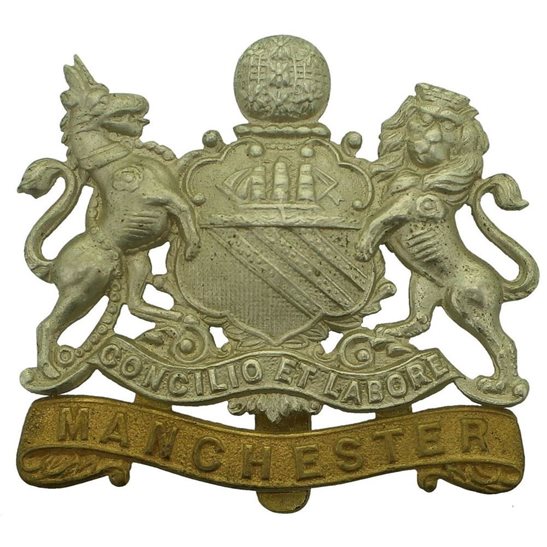Personal Details
Born: 27 September 1888 in Ruabon, Denbighshire, Wales.
Family: He was the eldest of four children born to Thomas Hughes, a watchmaker, and his wife Jane, nee Griffiths. No marriage can be traced for Thomas.
Residence: In 1901, he was living with his parents and siblings at 42 Hall Street, Rhosllanerchrugog. By 1911 the family had moved to 39 Claypit Street, Whitchurch, the address shown on the 1919 Absent Voters’ Register. His discharge papers showed an address of 21 Clun Terrace, Cachys, Cardiff.
Education: He attended the National School at Rhosllanerchrugog between 18 November 1885 and 22 April 1901, when he left to go to Oswestry.
Employment: He was a printer by trade.
Died: Not known
Military Details
Regiment: Manchester Regiment
Rank: Private
Service Number: 28828
Date of Enlistment: 24 August 1915
Date of Discharge: 6 May 1919
Reason for Discharge: Demobilisation
Other Information: His brother, Robert Arthur Hughes, also served in WW1.
Thomas was awarded the Campaign Medals (British War Medal, and Victory Medal).

The British War Medal (also known as 'Squeak') was a silver or bronze medal awarded to officers and men of the British and Imperial Forces who either entered a theatre of war or entered service overseas between 5th August 1914 and 11th November 1918 inclusive. This was later extended to services in Russia, Siberia and some other areas in 1919 and 1920. Approximately 6.5 million British War Medals were issued. Approximately 6.4 million of these were the silver versions of this medal. Around 110,000 of a bronze version were issued mainly to Chinese, Maltese and Indian Labour Corps. The front (obv or obverse) of the medal depicts the head of George V. The recipient's service number, rank, name and unit was impressed on the rim.
The Allied Victory Medal (also known as 'Wilfred') was issued by each of the allies. It was decided that each of the allies should each issue their own bronze victory medal with a similar design, similar equivalent wording and identical ribbon. The British medal was designed by W. McMillan. The front depicts a winged classical figure representing victory. Approximately 5.7 million victory medals were issued. Interestingly, eligibility for this medal was more restrictive and not everyone who received the British War Medal ('Squeak') also received the Victory Medal ('Wilfred'). However, in general, all recipients of 'Wilfred' also received 'Squeak' and all recipients of The 1914 Star or The 1914/1915 Star (also known as 'Pip') also received both 'Squeak' and 'Wilfred'. The recipient's service number, rank, name and unit was impressed on the rim.

